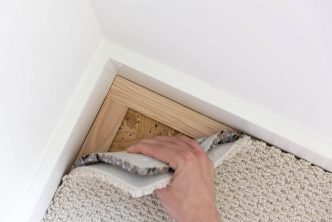Welcome to the homeowner’s essential guide to annual home inspections – your blueprint for maintaining a secure, efficient, and enduring property. A home isn’t just bricks and mortar; it’s a sanctuary, an investment, and a reflection of one’s hard work. Yet, maintaining its integrity and functionality requires more than mere occasional attention. Annual home inspections stand as the cornerstone of responsible homeownership, offering a proactive approach to safeguarding your dwelling against potential hazards and unexpected expenses. In this comprehensive guide, we’ll delve into the crucial significance of regular inspections, explore the key areas that demand attention, discuss the balance between DIY checks and professional expertise, aid in creating a comprehensive checklist and schedule, and provide insights into addressing issues and executing proper maintenance. By understanding and implementing the insights provided, you’ll empower yourself to nurture a safe, thriving, and enduring haven for years to come.
Table of Contents
The Importance of Regular Inspections
Regular inspections form the bedrock of a proactive approach to homeownership, serving as a crucial preventive measure against potential pitfalls lurking within a property’s infrastructure. These inspections aren’t merely routine checkups; they’re proactive measures that detect and address issues before they burgeon into costly, inconvenient crises. By adhering to a consistent schedule of annual inspections, homeowners can identify minor flaws or wear and tear in various systems and areas, allowing for timely repairs or maintenance. Such preemptive actions not only save significant expenses in the long run but also ensure the safety, functionality, and longevity of the dwelling.
Regular inspections lend a sense of empowerment to homeowners by bestowing them with a deeper understanding of their property’s condition and vulnerabilities. They provide an opportunity to familiarize oneself intimately with the home’s inner workings, enabling informed decision-making regarding necessary upgrades, repairs, or future investments. This knowledge cultivates a proactive mindset, fostering a homeowner’s ability to take charge of their property’s well-being, bolstering its resilience against unforeseen circumstances, and preserving its value over time.
Key Areas to Inspect
When conducting annual home inspections, it’s imperative to cast a comprehensive gaze over various critical areas of your property, and among these, pool leak detection emerges as a crucial facet. For homeowners blessed with a serene aquatic haven, the pool stands as an oasis of relaxation and recreation. However, undetected leaks within this aquatic retreat can lead to substantial water loss, exorbitant utility bills, and potential structural damage. Pool inspections should encompass meticulous checks for cracks, tears, or damaged liners, alongside inspecting filtration systems and plumbing connections for signs of leaks. Regular examination of the pool’s condition ensures not only its functionality and aesthetics but also guards against the financial burden of significant repairs due to overlooked leaks.
An annual focus on pool leak detection isn’t solely about preserving water and averting potential damage; it’s also about maintaining a safe environment. Unnoticed leaks can trigger structural instability, paving the way for accidents or injuries. An adequately maintained pool not only conserves resources but also secures the area for family and guests, fostering an environment where relaxation and leisure are coupled with peace of mind. Incorporating pool inspections into the annual home inspection regimen underscores the holistic approach to property care, ensuring that every aspect of the dwelling contributes to a secure, enjoyable, and sustainable lifestyle.
DIY vs. Professional Inspections
When contemplating the undertaking of home inspections, homeowners often grapple with the decision between DIY evaluations and seeking professional expertise. DIY inspections can serve as an initial step, fostering a deeper understanding of the property’s condition and enabling routine checks between professional visits. Simple tasks such as examining visible areas for signs of wear and tear, testing smoke detectors, checking for plumbing leaks, and assessing the general state of appliances can be efficiently managed by homeowners themselves. However, while DIY inspections offer a sense of hands-on involvement and familiarity with the property, they might lack the expertise and specialized tools needed to uncover hidden or complex issues.
On the other hand, professional inspections bring a wealth of experience, specialized knowledge, and sophisticated tools to the table. Trained inspectors possess a keen eye for subtle signs of trouble that might elude an untrained homeowner. Their comprehensive evaluations encompass intricate systems like electrical wiring, structural integrity, HVAC systems, and potential pest infestations. Professional inspections often unveil issues that might have gone unnoticed during DIY checks, offering homeowners a more thorough understanding of their property’s condition and ensuring that no stone is left unturned in safeguarding the home’s integrity.
Creating a Checklist and Schedule
Crafting a meticulous checklist and establishing a structured inspection schedule are integral elements of a homeowner’s proactive approach to property maintenance. A comprehensive checklist serves as a roadmap, guiding homeowners through the various facets of their property that require scrutiny during annual inspections. It should encompass diverse areas such as structural integrity, electrical systems, plumbing, roofing, HVAC, appliances, and potential areas prone to pest infiltration. Tailoring the checklist to the specific needs and nuances of one’s home ensures a methodical and thorough assessment, leaving no critical area unchecked.
Simultaneously, devising a structured inspection schedule is crucial to maintaining consistency and ensuring timely evaluations. Seasonal variations and the unique characteristics of different systems and areas should inform the frequency of inspections. For instance, inspecting the heating system before winter or the roof after heavy storms can preemptively address issues specific to those times of the year. By establishing a routine schedule, homeowners not only stay proactive in their property’s upkeep but also mitigate the risk of overlooking crucial inspections that could safeguard against potential damages and deterioration.
Addressing Issues and Maintenance
Addressing issues and performing regular maintenance tasks identified during annual inspections is the cornerstone of responsible homeownership. Once potential problems are flagged during inspections, prompt action is imperative to prevent minor issues from snowballing into major, costly repairs. Prioritizing and addressing these concerns in a timely manner not only ensures the safety and functionality of the home but also helps in controlling maintenance expenses over time. Whether it’s fixing a leaky faucet, repairing a damaged roof shingle, or addressing electrical issues, attending to these matters promptly is key to preserving the integrity of the property.
Adopting a proactive stance towards maintenance is essential for the sustained well-being of a home. Setting up a regular maintenance schedule based on the findings of inspections ensures that necessary upkeep tasks are consistently performed. This could range from changing air filters, cleaning gutters, and servicing HVAC systems, to landscaping maintenance. By adhering to this schedule, homeowners can enhance the longevity of their home’s components, mitigate the risk of unexpected breakdowns, and ultimately safeguard their property investment while ensuring a comfortable and safe living environment.
Conclusion
In the realm of homeownership, the commitment to annual home inspections emerges as a pivotal practice, safeguarding not just the structure but also the invaluable comfort and security of a dwelling. As this comprehensive guide illustrates, regular inspections represent a proactive stance towards property maintenance, empowering homeowners to identify, address, and prevent potential issues before they escalate. Whether through a meticulous checklist, timely professional inspections, or proactive maintenance strategies, the significance of these practices in preserving a home’s integrity cannot be overstated. By embracing the insights shared here, homeowners are equipped not only to nurture a safe, thriving haven but also to fortify their property’s resilience against the vagaries of time, ensuring enduring value, comfort, and peace of mind for years to come.





